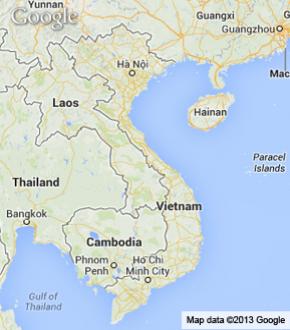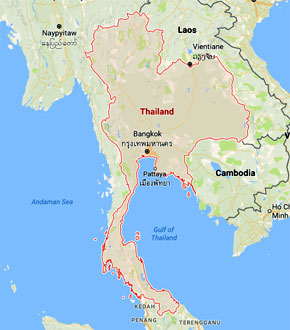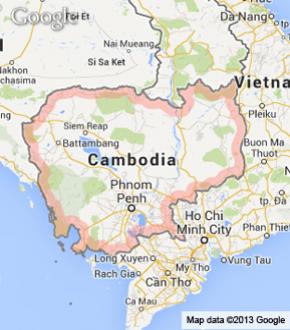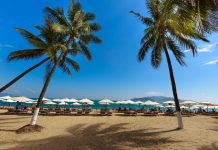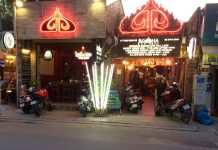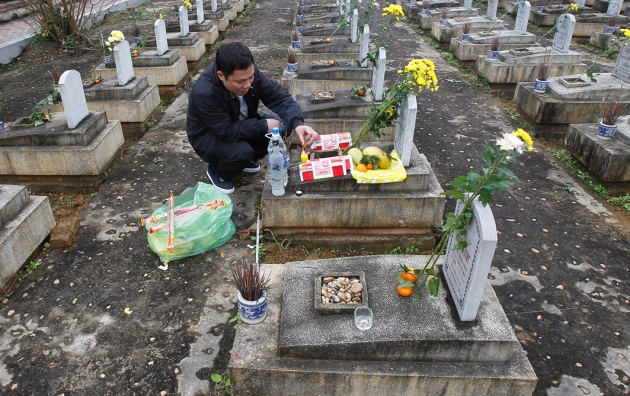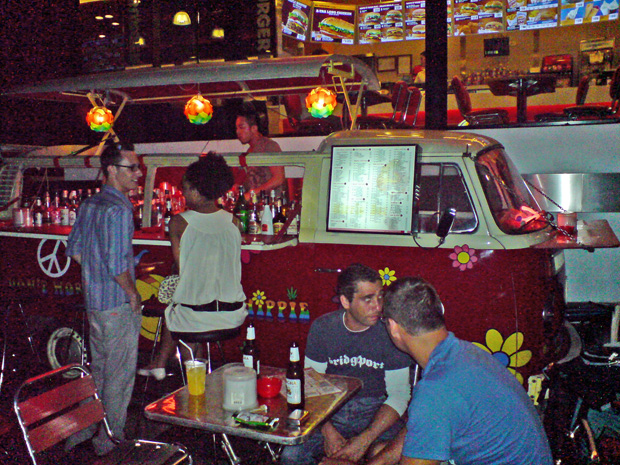Halong Bay: The Bay of Descending Dragons
This is quite simply one of the most beautiful places on earth. A UNESCO World Heritage Site due, to its outstanding natural scenic beauty, it has also been named as one of the Seven Wonders of Nature. The bay covers 600 square miles and includes 1960 islands, limestone karst features which jut imperiously out of the water to form an incredible vista. The best way to see the bay is to book a cruise with one of the luxury cruise boat companies that ply their trade here. The boats are extremely well appointed and glide effortlessly between the islands. excursions from the boats include visiting the amazing Sung Sot or Surprise Cave, kayaking, canoeing, visiting the pearl farms and going to the floating villages. It is an absolutely unmissable excursion on any Vietnam holiday.
Hoi An: Lanterns, tailor shops and some of the finest food in Vietnam
Hoi An is one of the prettiest towns imaginable. It is a quaint old sea port with a long history. The Ancient Town here is another UNESCO World Heritage Site and makes for a really great day out in itself. Access is over a 400 year old Japanese covered bridge, the only one in the world with a Buddhist temple built into the side. The town is known throughout the country for its tradition of lantern manufacture. Hundreds of these brightly lit paper lanterns are hung out at night to provide a colourful, illuminated display on many streets. It seems like every other shop here is a tailors. Made to measure suits are available at incredibly cheap prices and can be collected in 24 hours. The restaurants, particularly down by the waterfront are both beautiful to look at and superb in their food presentation. The White Marble on Le Loi, being amongst the very best of them. You must try the Hoi An White Rose Dumplings.
The Mekong Delta: Home to 17 million people and an unforgettable experience
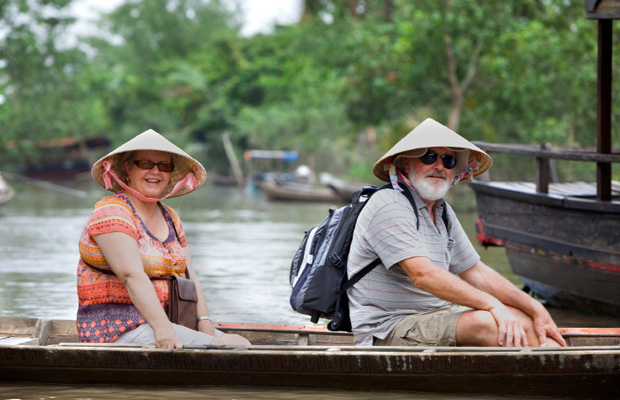
Visiting the Mekong Delta provides an amazing experience for everyone. This fabulously romantic old river, the mighty Mekong or the Road to Mandalay as Kipling called it, has fascinated travellers for generations. It winds its way for 2700 miles through six countries before exiting into The South China Sea, as it does so, it splits into hundreds of tiny rivers, rivulets and streams to form the delta. The nutrient rich flood waters bring an economy to millions; this is the heart of Vietnam’s rice farming land and also provides 50% of the nation’s fish stocks. The regional capital Can Tho, is a wonderful little town whose riverside promenade Hai Ba Trung, is more reminiscent of a Mediterranean village than an Asian capital. The near Cai Rang Floating market is an astonishing thing to experience. Hundreds of colourful boats cram into the main body of the river as traders sell and barter their goods every morning in a scene unchanged for generations.
Saigon: The very name conjures up mystery and magic
Ho Chi Minh City as it is now called, in honour of the father of modern day Vietnam, is a spectacular city in every sense of the word. Ancient Chinese temples, magnificent French colonial buildings and immense modern glass towers all combine in a riot of architectural splendour. This is a big city by any measure, 12 million people and even more motorbikes; the rush hour has to be seen to be believed. Fabulous restaurants, shopping to rival Milan and a thriving nightlife make this a magnet for Vietnam’s middle class, wealthy visitors to the many 5 star hotels and backpackers who come in their thousands. The Pham Ngu Lao area is the starting point for many, as it is here that the buses arrive from destinations all around the region. Twenty thousand expats have made Saigon their home and the modern areas like Districts 2 and 7, are modern and westernised. The central regions of districts 1, 3 and 4 however still maintain an ancient Vietnamese feel. Quite simply, Saigon has everything.
Hanoi: The nation’s capital and the city of lakes
Hanoi is more old Vietnamese than Saigon; smaller and not as modernised. That being said, the nation’s tallest skyscraper is here, 72-storey Landmark 72 is 1,132 feet tall. The city though, is more well known for the Old Quarter, a lovely area of narrow streets and alleyways in which the best restaurants and bars are found. This is a quiet town for the most part and most of it closes down quite early be Western standards. Up until recently everywhere closed at 10.00pm, though in recent years, midnight is becoming a much more common curfew. The Hoan Kim and West lakes are the two main ones. It was in Hanoi that Pho, the fragrant and flavoursome beef noodle soup was invented; this has become Vietnam’s national dish. Hanoi is a terrific place to use both as a destination in itself but also for exploring Halong Bay and Sapa.
Sapa: Life in the skies has remained unchanged for generations
Sapa is the mountainous region to the north west of Hanoi. It is accessible by taking an overnight sleeper train from the nation’s capital. This are of mountains and valleys is home to 8 of the country’s numerous ethnic minority people. They farm the land, growing rice on the many terraces that they have cut into the hillsides, providing economic stability for them and the most scenically beautiful landscape for everyone else. The remain however, the poorest people in the country. Tourism is helping to lift them out of poverty as Sapa is fast becoming a mecca for trekking holidays and home stay visits. The regional capital of the same name, is small but is fast gaining hotels to meet the demand of the tourism boom. The weather here is understandably cooler than in the rest of the country and makes for a pleasant respite from the sometimes searing heat.
Hue: The Citadel of Ancient Monuments and much more
Hue, the nation’s former capital was also the imperial capital during the Nguyen Dynasty. The Citadel of Ancient Monuments here is yet another of Vietnam’s UNESCO World Heritage Sites. The temples and old houses inside the walled city,here were badly damaged in the Vietnam War but there is still much to see and marvel at. It was here that Stanley Kubrick filmed his movie, “Full Metal Jacket”The city is built on the banks of the Perfume River, which gets its name due to the thousands of blossoms from fruit tress that drop into the water and drift slowly through the town in the Autumn, bringing with them a head aroma to the whole area. Holidaymakers enjoy delightful boat trips along the river here to visit the tombs of the emperors Minh Mang, Khai Dinh and Tu Duc.
Nha Trang: Vietnam’s Top Beach Resort has much to offer
Nha Trang was historically known as Kauthara under the rule of the Champa. It is here that the famous Po Nagar Tower that they built, still stands. A smallish city of half a million people it has developed into the centre of Vietnam’s beach and scuba tourism. Its tropical savanna climate provides a long dry summer and a relatively short wet season from September to December. My Khe Beach here goes by the Western name of China Beach and gained fame due to the American TV series of the same name. The beaches here are spectacular, long stretches of golden sand, slipping down to azure blue seas and fringed with palm trees and thatched beach umbrellas. Its situation, an hour’s flight from Saigon, has meant that it has become popular with the cities middle classes as a weekend getaway.
Phu Quoc: Closer to Cambodia but Vietnam’s largest Island
Phu Quoc is a delightful island in the Gulf of Thailand, only a few miles off the coast from Sihanoukville in Cambodia. It has been the source of much diplomatic wrangling between Cambodia and Vietnam over the years, and it is not surprising. It is a delightful place. The province includes the main Island and twenty one other small islets. Composed of sedimentary rock, it is covered in lush greenery and fringed with beautiful beaches. It is famous for its fish sauce manufacture, from local anchovy stocks, and the growing of extremely high quality pepper. The old prison here was notorious in the Vietnam War for the terrible treatment of prisoners and remains a museum. Not the island is simply a wonderful holiday destination, tranquil and scenically very special indeed.
Da Lat: Five thousand feet above sea level and a centre for Vietnam’s agriculture
The region and city both named Da Lat, “The City of a Thousand Pine Trees” due to the glorious pine forests that surround it. The region has its own climate, providing very temperate weather and causing it to be the countries largest area for the growing of cabbage, cauliflower and other temperate crops. The city was a very popular playground for rich French colonials who built many beautiful villas here. The city almost resembles a town in the French Alps and is a superb place to stay, quite unlike anywhere else in Vietnam. The locale offers tremendous opportunities for mountain biking, hiking and canyoning. High above the city the Thien Vien Truc Lam Monastery is reached by a scenic cable car ride.
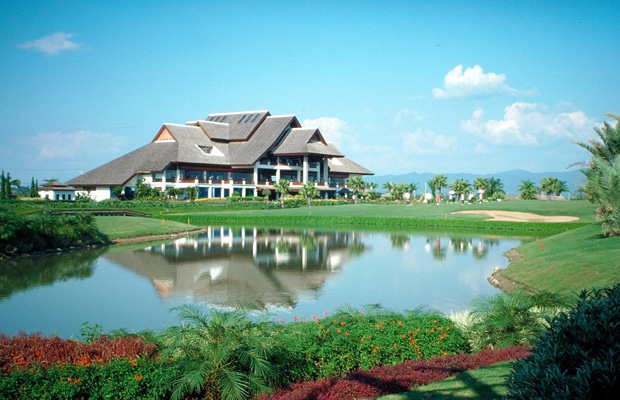
Vietnam has so many fantastic destinations, these are just 10 of the very best. How many have you done? Let us know. Tell us your experiences.


